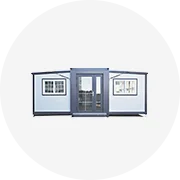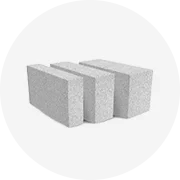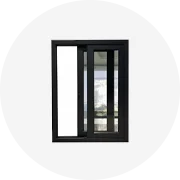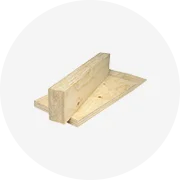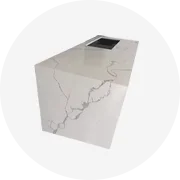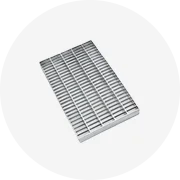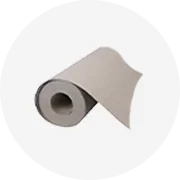Types of 10ft Container Toilets
10ft container toilets are compact, portable sanitation solutions that provide reliable restroom facilities for various settings including construction sites, outdoor events, and remote locations. These mobile units offer convenience and comfort where permanent facilities are unavailable.
| Type | Key Features | Best For |
|---|---|---|
| Standard Container Toilet | 1-2 toilet stalls, handwashing sinks, water supply | General use, construction sites, small events |
| Disabled Access Container Toilet | Spacious interior, grab rails, wheelchair-accessible toilet | Inclusive events, public spaces, ADA compliance |
| Shower Container | Shower stalls, changing areas, lockers for privacy | Sports events, camping sites, disaster relief |
| Executive/Luxury Container Toilet | High-quality finishes, climate control, music systems | Weddings, corporate events, VIP areas |
| Eco-Friendly Container Toilet | Water conservation, biodegradable chemicals, solar power | Environmentally sensitive areas, green events |
| Waste Treatment Container Toilet | On-site waste treatment, composting systems | Remote locations, long-term installations |
Standard vs. Luxury Options
Standard container toilets provide essential sanitation with basic amenities at an affordable cost. Luxury models offer premium experiences with high-end finishes, climate control, and enhanced aesthetics at a higher price point.
Price difference: 30-50% higher for luxury models
Eco-Friendly vs. Traditional Models
Eco-friendly container toilets use 70% less water and biodegradable chemicals while generating power through solar panels. Traditional models offer reliability and lower upfront costs but have a greater environmental impact.
ROI timeline: Eco models typically recover extra costs within 2-3 years
Expert Advice: When selecting a container toilet type, consider both immediate needs and future requirements. For events lasting more than three days, upgrading to models with enhanced waste management capabilities can significantly improve user experience and reduce maintenance frequency.
Specifications and Maintenance of 10ft Container Toilets
Size
10ft (L) × 8ft (W) × 8.5ft (H)
80 square feet total area
Material
CORTEN steel (corrosion resistant)
Alloyed with copper, chromium, nickel
Capacity
2-3 toilet stalls
10-15 users per day
Weight
1,500-2,000 kg
Varies by configuration
Detailed Specifications
Design Elements
- Adequate ventilation systems
- Natural lighting with optional skylights
- Modern fixtures (sinks, toilets, urinals)
- Spacious interior for comfort and privacy
- Accessibility ramps for wheelchair access
Safety Features
- Fire extinguishers in accessible locations
- First aid kits for emergency situations
- Emergency alarm systems
- Secure locking mechanisms
- Non-slip flooring for wet conditions
Maintenance Requirements
| Maintenance Task | Frequency | Importance |
|---|---|---|
| Cleaning toilets and fixtures | Daily/After each event | Critical |
| Sanitizing surfaces | Daily | Critical |
| Checking plumbing for leaks | Weekly | High |
| Inspecting for corrosion | Monthly | Medium |
| Checking safety equipment | Monthly | High |
| Deep cleaning | Quarterly | Medium |
Maintenance Tip: To prevent mold growth and unpleasant odors, ensure proper ventilation by keeping vents clear and considering the installation of a small extraction fan. For high-traffic locations, implement a rotation of disinfectants to prevent bacterial resistance and maintain effectiveness.
How to Choose 10ft Container Toilets
Selecting the ideal 10ft container toilet requires careful evaluation of several key factors to ensure it meets your specific requirements for functionality, comfort, and budget.
Usage Capacity Considerations
Calculate the expected number of users and frequency of use to determine the appropriate size and features needed:
- Small events (10-50 people): 1-2 standard units
- Medium events (50-100 people): 2-4 units with mix of standard and specialized
- Large events (100+ people): 5+ units with variety of types
Rule of thumb: For every 50 attendees at a 4-hour event, provide at least one toilet
Site Requirements Analysis
Evaluate the installation location to ensure compatibility with the container toilet:
- Ground conditions: Level, stable surface required
- Access for delivery: Minimum 12ft clearance path
- Utilities availability: Water, electricity, drainage connections
- Compliance: Local regulations for temporary facilities
Important: Verify weight-bearing capacity of ground (min. 2,000 kg support)
Key Selection Criteria Checklist
| Selection Factor | Considerations | Impact on Decision |
|---|---|---|
| Toilet Type | Standard flush vs. composting; water availability | Affects water usage, maintenance, environmental impact |
| Accessibility | ADA compliance, ramp requirements, interior space | Legal compliance, inclusivity for all users |
| Ventilation & Odor Control | Vents, fans, air fresheners, waste treatment | User comfort, health considerations, maintenance frequency |
| Amenities | Basic vs. luxury features, climate control | User experience, suitability for event type, cost |
| Maintenance Requirements | Cleaning frequency, waste disposal method | Operational costs, staff requirements |
| Delivery & Setup | Transport logistics, installation complexity | Timeline planning, additional costs |
| Budget Constraints | Purchase vs. rental, long-term ROI | Financial feasibility, payment structure |
Important Consideration: Always verify that your chosen container toilet meets local health and safety regulations. Requirements vary significantly between jurisdictions, particularly regarding waste disposal methods and accessibility standards.
DIY Guide: How to Replace Toilets in 10ft Containers
Replacing toilets in a 10ft container requires careful planning and precise execution. Follow this detailed guide to successfully complete this technical project while ensuring proper functionality and sanitation.
Safety Note: Always wear protective gear including gloves and eye protection. Work with a partner when handling heavy items like toilets. Turn off all water and electrical connections before beginning work.
Shut Off the Water Supply
Locate the shut-off valve behind the toilet and turn it clockwise until fully closed. Flush the toilet to drain water from the tank and bowl. Use a sponge or towel to remove any remaining water to prevent spills during removal.
Tools needed: Sponge, bucket, towels
Disconnect the Water Supply Line
Using an adjustable wrench, loosen the compression nuts at both ends of the supply line. Carefully remove the line and inspect for corrosion or damage. If the supply line shows signs of wear, replace it with a new flexible braided steel line for improved durability.
Tools needed: Adjustable wrench, replacement supply line (if needed)
Remove the Existing Toilet
Remove the decorative caps covering the floor bolts at the base of the toilet. Use a socket wrench to loosen and remove the nuts securing the toilet to the floor. Gently rock the toilet back and forth to break the wax seal, then lift straight up to remove. Have a helper assist with lifting as toilets are heavy and awkward.
Tools needed: Socket wrench, pry tool for caps, helper for lifting
Replace the Wax Ring
Scrape away the old wax ring from both the toilet horn and floor flange using a putty knife. Clean the flange area thoroughly. Position a new wax ring on the flange with the tapered side facing up, or place it on the toilet horn if using a wax-free seal.
Tools needed: Putty knife, new wax ring, cleaning supplies
Install the New Toilet
Lower the new toilet carefully onto the flange, ensuring the bolts come through the mounting holes at the base. Press down firmly and evenly to create a tight seal with the wax ring. Install washers and nuts on the bolts and tighten alternately until the toilet is level and secure, but be careful not to overtighten and crack the porcelain.
Tools needed: Level, socket wrench
Reconnect Water Supply
Attach the water supply line to both the toilet fill valve and the shut-off valve. Hand-tighten first, then use a wrench to secure the connections with a quarter-turn. Avoid overtightening which can crack the fittings.
Tools needed: Adjustable wrench
Check for Leaks
Turn on the water supply slowly and watch for any leaks at connection points. Flush the toilet several times while observing all connections and the base of the toilet. Address any leaks immediately by tightening connections or replacing seals as needed.
Tools needed: Flashlight, towels for checking leaks
Finalize Installation
Trim the mounting bolts to the appropriate length using a hacksaw if they extend too far above the nuts. Install decorative caps over the bolts. Apply a bead of silicone caulk around the base of the toilet where it meets the floor, leaving a small gap at the back to detect potential future leaks.
Tools needed: Hacksaw, silicone caulk, caulk gun
Warning: If you encounter plumbing beyond your skill level, such as damaged flanges or non-standard connections, consult a professional plumber. Improper installation can lead to water damage, leaks, and unsanitary conditions.
Frequently Asked Questions
A standard 10ft portable toilet can comfortably serve 10-15 users per day under normal conditions. This capacity varies based on several factors:
- Duration of the event (shorter events allow for more users)
- Frequency of servicing and maintenance
- Additional facilities like sinks that may reduce available space
- Type of event (food/drink-focused events may require more capacity)
For high-traffic events, industry standards recommend one toilet per 50-75 people for a 4-hour event duration. This ratio should be adjusted based on specific event circumstances.
Service frequency depends on usage volume and event type:
| Usage Level | Recommended Service Frequency | Special Considerations |
|---|---|---|
| High Traffic (festivals, large events) | Daily service | Multiple services per day may be needed for extremely high volume |
| Medium Traffic (construction sites) | 2-3 times per week | Weather conditions may necessitate more frequent service |
| Low Traffic (remote locations) | Weekly service | Extended periods between service require specialized waste treatment |
Professional servicing includes waste removal, thorough sanitization, replenishing supplies, and checking for maintenance issues.
Waste disposal from portable toilets follows a regulated, hygienic process:
- Collection: Specialized vacuum trucks with separate waste and freshwater tanks pump out waste from the toilet holding tanks
- Transport: The waste is securely transported in sealed tanks to approved treatment facilities
- Treatment: At wastewater treatment plants, the waste undergoes processing similar to municipal sewage
- Regulation: The entire process is governed by environmental regulations to ensure safe, sanitary handling
For eco-friendly portable toilets, some waste may be processed through composting systems that break down materials into usable compost under carefully controlled conditions.
The utility requirements vary by container toilet type:
- Standard basic models: No water or electricity required. Use chemicals to break down waste and control odors.
- Flush toilets: Require fresh water connection or integrated water tank. May be gravity-fed or pump-operated.
- Luxury models: Typically require both water and electrical connections for lighting, heating, air conditioning, hand dryers, and flush mechanisms.
- Self-contained units: Feature integrated water tanks (typically 200-300 gallons) and may include solar panels or generators for electricity.
For locations without utility access, self-contained units with holding tanks and solar power can provide modern amenities without external connections.
Cleaning frequency depends on usage patterns and event type:
| Scenario | Recommended Cleaning Schedule | Cleaning Level |
|---|---|---|
| Standard usage | Weekly | Full cleaning and sanitization |
| Construction sites | 2-3 times weekly | Full cleaning with focus on high-touch surfaces |
| Outdoor events | Daily | Complete cleaning plus supply replenishment |
| High-volume events | Multiple times daily | Quick sanitization and supply checks |
Professional cleaning should include sanitizing all surfaces, restocking supplies, emptying waste tanks, refreshing water and chemicals, and checking for maintenance issues. For extended use scenarios, scheduling deep cleaning services monthly helps prevent odors and maintains sanitary conditions.

















































